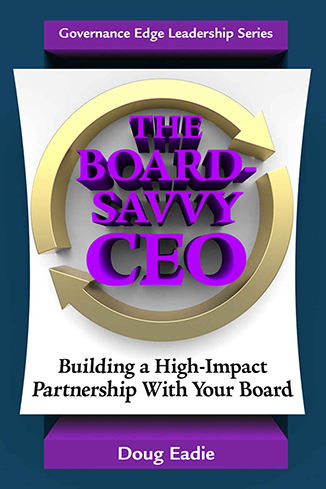“This couldn’t be more different from what many people call strategic planning,” I thought to myself as I listened to the second part of the podcast that Board Chair Guy Legault and CEO Michael Anderson of the Canadian Society of Association Executives recorded for this blog. Guy and Michael were describing the process that CSAE employed in updating its business model. Early on, they said, they’d understandably felt tremendous pressure to click into a familiar – and comfortable – planning mode dear to the hearts of many hard driving executives: fashioning a set of concrete goals and putting together a timeline to get the thing done “reasonably soon” – you all know the drill. Thank heaven they resisted the siren song of conventional planning, instead launching an unrushed, open, highly collaborative process that enabled CSAE Board and executive team members and a diverse group of volunteer leaders to challenge the “orthodoxies” – the conventional assumptions – that all too often keep nonprofit planning well within the proverbial box. You won’t be surprised to learn that the preeminent bit of conventional wisdom they challenged during the process was that CSAE’s only customer was its current dues-paying members. Widening their definition of “customer” to include association board members, “F-10s” (managers in the first decade of their careers), and “growth-oriented” associations was a critical step in fashioning a business model capable of generating significant future growth.
Over the years, I’ve witnessed many well-meaning nonprofits do the kind of “strategic planning” that merely projects what’s already going on into the future for some totally arbitrary and meaningless period (typically three or five years). I’ve concluded that this so-called “strategic planning” is essentially operational planning in a fancy disguise. Totally trapped in the conventional box, it’s the dullest possible tool for generating significant innovation – and hence, growth. I every so often think about a research project I conducted some 25 years ago that instilled a healthy skepticism of formal planning. I studied the elaborate strategic planning process of an urban, three-campus community college – a major nonprofit with over 30,000 students and a $100 million budget – over a five-year period. Over the course of those five years, the college made significant investments in innovation – for example, a high-tech worker re-training center involving a number of prominent corporate collaborators – but not one of these investments was generated by the strategic planning process itself. Typically an aggressive faculty member or executive came up with a growth initiative and lobbied mightily for it through the channels. The most the formal planning process did over the five year period I studied was to incorporate the initiative once it had been added to the operating plan and budget, in essence codifying and projecting it into the future. I recall thinking at the time how sad it was to see so much precious time, energy, and money devoted to a process that produced so little of value in terms of serious innovation.
It’s not difficult to understand why “strategic planning” has so often left conceptual boundaries intact, at the expense of innovation. Under the best of circumstances, change is uncomfortable, often fearsome, and at times excruciatingly painful. So we shouldn’t be surprised that significant change is all too often the “road less traveled.”
Guy and Michael’s podcast tells us about a planning process that really has broken out of the box, putting the Canadian Society of Association Executives back on the growth track. I hope readers will comment and share their experience in updating their organizations’ business models.





